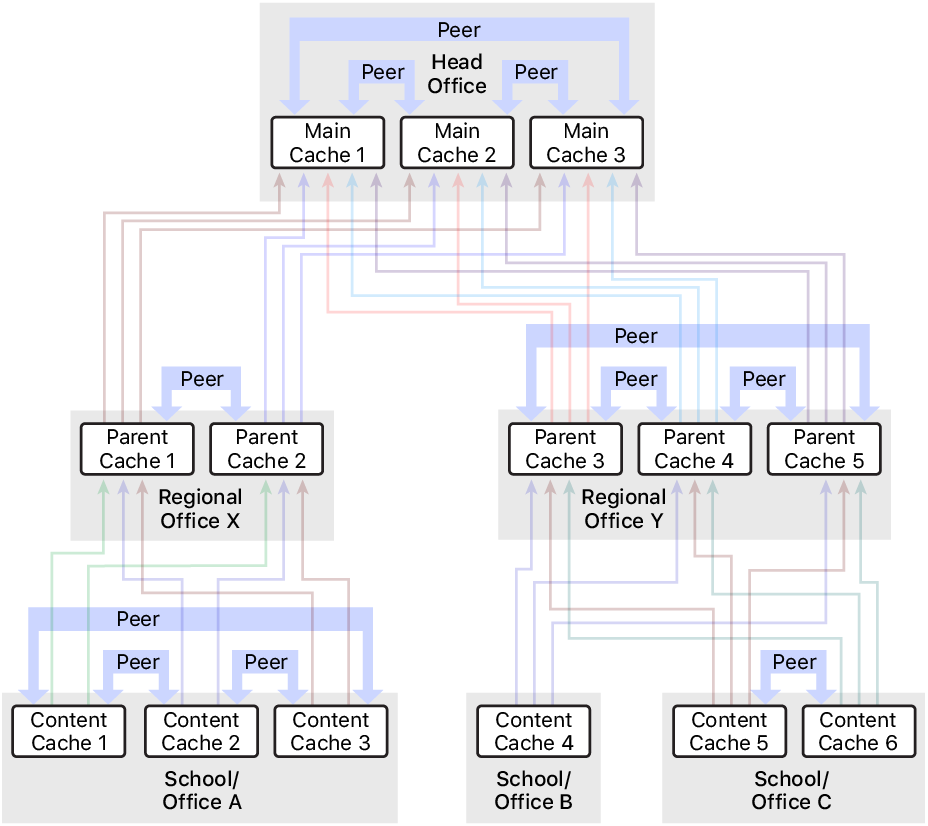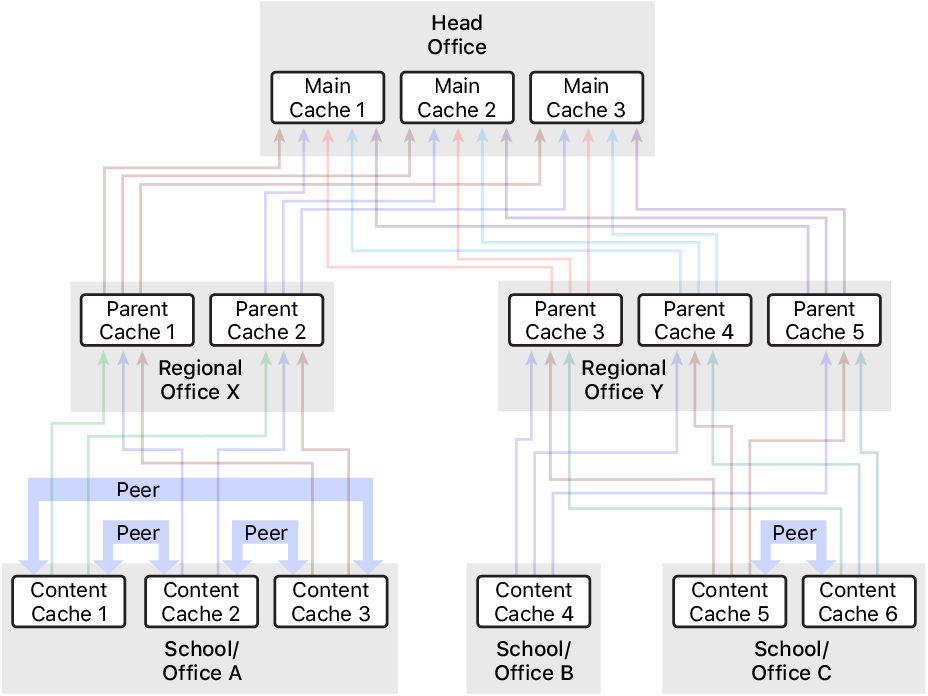
Use multiple content caches on Mac
You can have multiple content caches for your network. If you have more than one, you can specify peer and parent relationships for the content caches. Content caching uses these relationships to determine which content cache is queried to fulfill a content request.
The following examples show two different ways the peer and parent relationships between multiple content caches in a network might be defined. In each example, the network is organized into a three-level hierarchy that has parent and grandparent content caches. The difference between them is how the peer content caches are defined. In the first example, peers are defined at each level of the hierarchy. In the second example, peers are defined only at the lowest level of the hierarchy.
You might choose a configuration matching the first example to maximize sharing among caches. If one of the content caches in a location is unavailable, another might already have the same content cached. Content caches 1-6 and parent caches 1-5 can use the parent selection policies first-available, random, round-robin, or sticky-available.
You might choose a configuration matching the second example to maximize the total size of the cache. Parent caches 1-5 do not share content with each other, and neither do main caches 1-3. Content caches 1-6 and parent caches 1-5 can use the parent selection policy url-path-hash.

